It has only 22 thousand inhabitants and is probably not even among the best-known destinations in Abruzzo, but Ortona is indeed a pearl to be discovered. A rich historical town, venue of significant events, but also a quiet place where you can stroll around admiring romantic and evocative views soothed by the sound of the waves of the Adriatic Sea.
If you're wandering around Abruzzo and want to make a quick stop in an enchanting place, be aware that you'll be pleasantly surprised here: take our ultimate guide to Ortona, the latest Blue Flag in the region, with all the interesting things you can see.

Ortona: the ultimate guide for one or two days
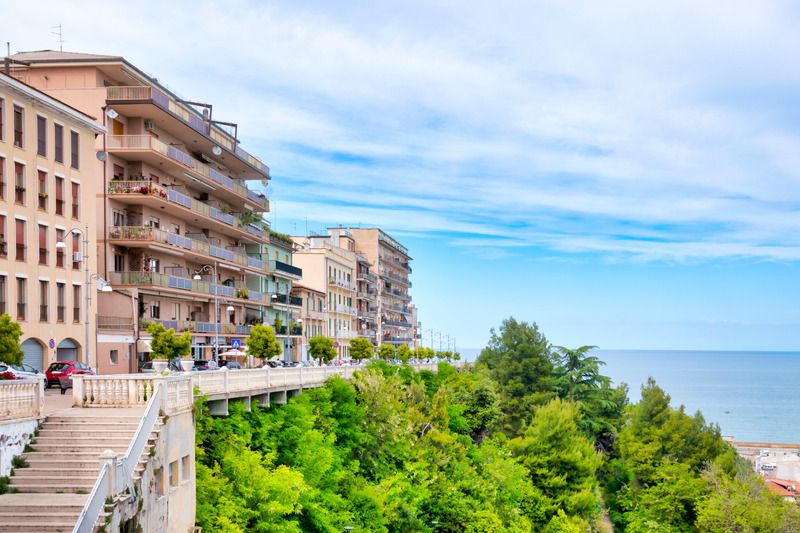
The city of Ortona is located in the province of Chieti and features a very ancient history, beginning with the indigenous population of the Frentani and continuing under the rule of the Romans, who made it an important trading port. Later, it was conquered by the Normans, the Angevins and above all the Aragonese, a population whose most obvious testimony we find today, which is the castle.
This stunning building certainly represents the symbol of the town today, but many other points of interest should not be overlooked, such as the museum that reminds us of the horrors of World War II or the cathedral dedicated to St. Thomas, the patron saint.
Finally, if you simply want to enjoy the sea, the famous Trabocchi Coastline, the main attraction of the Adriatic Sea, begins from this delightful town, which is punctuated with fabulous sandy but also rocky beaches. And if that's not enough for you, here's a curiosity: Ortona is the birthplace of Rocco Siffredi, the Italian hard-core movie star who needs no introduction.
Want to learn more? Here you'll find our definitive guide to Ortona, a useful tool if you want to explore it in a day or two while heading along the Abruzzo coastline.
Listen to the article about Ortona and the Trabocchi Coast with the voices of Monna Lisa & Leonardo
The Trabocchi Coastline starts here
The Trabocchi Coastline is an approximately 45-kilometer-long portion of coastline that faces the Adriatic Sea and starts precisely from Ortona and goes all the way to Vasto, just a short distance from the border with Molise. It therefore represents an ideal starting point if you want to admire these rudimentary and fascinating wooden structures that are one of the symbols of Abruzzo and that formerly represented the fishermen's stall, while today they house gourmet restaurants.
Ortona's most famous and popular are Mucchiola, Punta Fornace, Vento di Scirocco and San Giacomo, where sea-flavored dishes are, of course, not to be missed. The Trabocchi can be reached easily by pedaling along the waterfront and can be ideal stops for a peculiar tour or an original subject for a photobook.
Explore Abruzzo through its winesIn our definitive guide to Ortona we cannot leave out its patron saint, St. Thomas. To the most skeptical apostle is dedicated a bronze statue emerging from the waters in the harbor and resting on a brick turret, resembling a sort of buoy. The saint is believed to be the protector of sea travelers, which is why the statue faces the horizon in the act of blessing.
The city cathedral is dedicated to Thomas as well, inside which his relics have been kept since 1258. This priceless treasure, not surprisingly, came from the sea, more precisely from the Greek island of Scio, which clearly corroborates the saint's relationship with this element.
The Eastern Promenade
Leaving the harbor behind, it is traditional to reach the city center and points of interest by walking along the so-called Passeggiata Orientale, the Eastern Promenade, a walkway standing out in the east of Ortona. The path, bordered by an elegant marble balustrade, caresses the perimeter of the town and is definitely the ideal spot from which to admire the profile of the coastline, perhaps taking advantage of the magical moment of sunset.
Live the Abruzzo countryside with a picnicThe Aragonese Castle
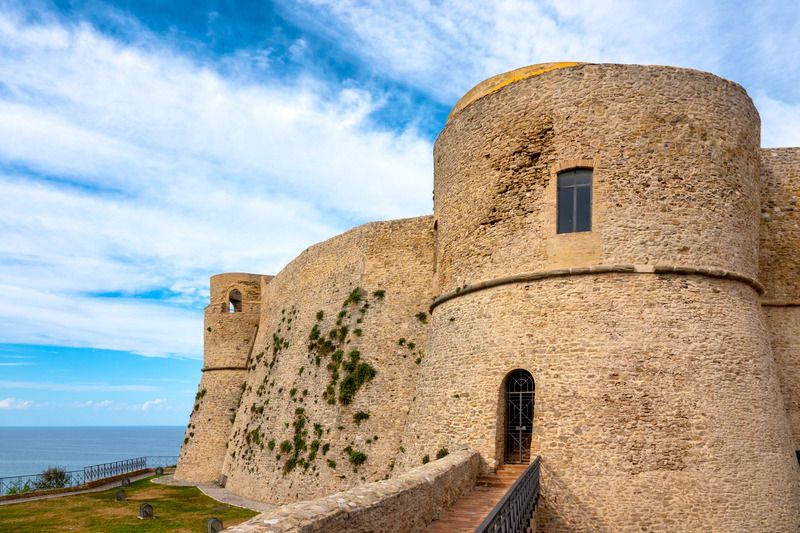
Continuing along the Eastern Promenade we reach the upper part of the town, right up to the majestic Aragonese Castle, built in the 15th century for protective purposes. Like many other buildings in Ortona, the castle was destroyed by bombing during World War II, but luckily numerous restorations have restored it to a worthy structure, at least as far as the walls surrounding it are concerned.
Over the centuries it became first a gunpowder store and later a private residence; today, fiercely positioned in its commanding location overlooking the sea, the castle is owned by the municipality, which is why it can be freely accessed. The structure preserves intact three of its striking towers and, as we said, their decorated walls, which make it possible to walk through the interior without losing the beautiful view.
The Museo della Battaglia, the Museum of the Battle
Ortona was unfortunately a key protagonist during World War II, because, as we said, it was almost totally destroyed by bombing and was the scene of a bloody battle between the Canadian Allies and the Nazis between December 20 and 28, 1943. At the time, the city was on the famous Gustav Line, which was the main German fortified defensive line, and the Allies, attempting to reach Rome from the Adriatic side, were intercepted and stopped. The Nazis eventually beat a retreat only when reinforcements arrived from the Atlantic, but the victim count was truly merciless and the city was practically burned to the ground.
The Museo della Battaglia, the Museum of the Battle aims to remember these events and keep them alive in the collective memory. Opened in 2002, it is located inside the former convent of Sant'Anna, and this is no coincidence, because it was home to the Casa del Fascio during the Fascist period. Inside there is an interesting and detailed exhibition displaying the tragic war events through photos and documents, maps, drawings, military equipment and models, but also a focus on the conditions of the population at the time and of the soldiers in the hot zones.
The Canadian cemetery
The arrival of the Canadians, as we have said, made it possible to save Ortona from the Nazi invasion, but unfortunately the number of casualties in the battle was really high: more than 1,400. The young soldiers who sacrificed themselves for the salvation of Ortona received a worthy burial at the Moro River Canadian War Cemetery, which stands as an emblem of the moral debt and gratitude that the city owes to Canada.
Situated near the Moro River, it stands on high ground and features the classic structure of Anglo-Saxon cemeteries, with rows of marble headstones silhouetted in the meadows; a silent and evocative place where conflict heroes rest deservedly in peace.
Foreign soldiers were also honored with the Square of Canadian Heroes, where the nation's flag flies proudly and the main garden bed takes the shape of the maple leaf.
The most beautiful beaches
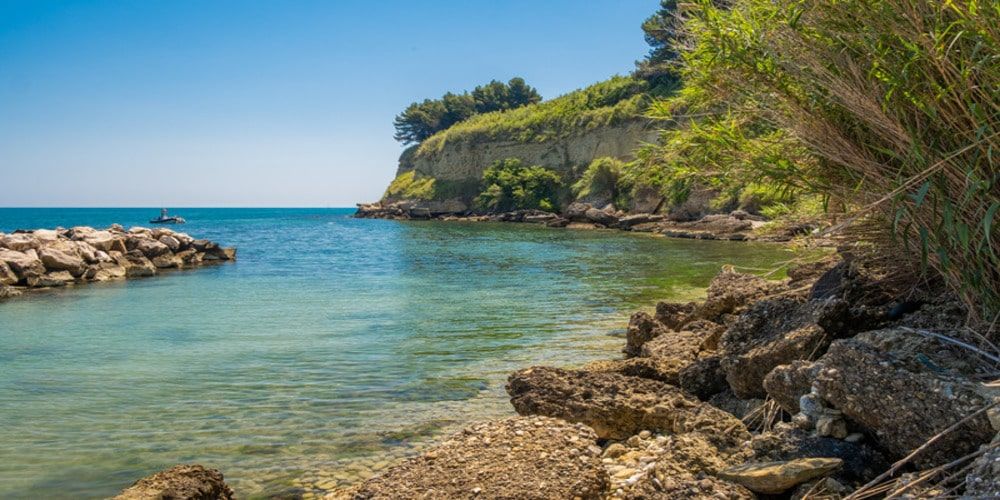
Our definitive guide to Ortona can't miss a special mention of its beaches. Abruzzo is famous for its beautiful beaches and boasts 15 Blue Flags, the highest number in Italy, and Ortona is just the latest town to join the list in 2024, with its crystal-clear sea from whatever angle, both in the sandy and pebbly areas.
As we said, the Trabocchi Coastline begins from Ortona, and the stretch included in the municipality is about 20 km long. Here you can come across golden, flat shores, such as Lido Riccio, with its characteristic red lighthouse, and Lido dei Saraceni, but also small bays with a wilder, rockier appearance, such as Punta Ferruccio and Ripari di Giobbe, located on a promontory.
But the most famous and busy one certainly remains Punta dell'Acquabella, so called because of its limpid waters; it is a free beach, which has no equipped facilities, and is located within a nature reserve full of typical Mediterranean vegetation, such as pines, olive trees and vines (from which Abruzzo's most famous wines, Trebbiano and Montepulciano, are made).
Finally, under the Aragonese castle is the Spiaggetta della Ritorna, where in ancient times the women of Ortona used to wait for their husbands and sons who had left for work by sea. And where many swear to have heard whispers of "ritorna, ritorna" (return, return) from the waves crashing on the rocks.
How to get to Ortona
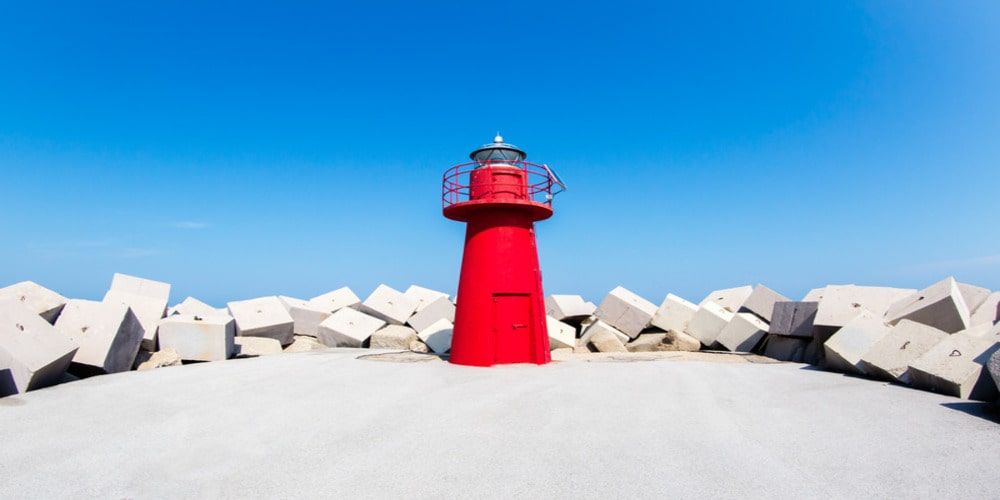
Ortona is located in the heart of the Adriatic coast, in a fairly central area in Abruzzo. It is about 20 km from Pescara and about 30 km from Chieti, but it is also not too far from Molise (70 km). It can also be reached without too much difficulty from Rome, from which it takes 2-3 hours by car.
However, if you want to leave your car at home, you can reach Ortona by public transportation, but be aware that unfortunately the journey is longer. The easiest route from Rome consists of taking a bus and making a change in Pescara. From there you can take another bus (about a 30-minute ride) or a train (about a 15-minute ride). Even from Chieti you can take a bus or train that passes through Pescara and it takes about 30 to 40 minutes to get there.
If you want to arrive from the south and north of Italy, the fastest way we recommend is finally by plane; Pescara airport is closest to Ortona, and flights to Bergamo, Turin, Catania, Trapani and Alghero depart from here.
Reach Ortona from RomeHow to get around Ortona
Our ultimate guide to Ortona comes to an end with a tip on getting by: don't hesitate to fully experience this delightful town by walking on foot, to look around, breathe in the scent of saltiness, enjoy the weather, and most of all be able to stop and admire beautiful watercolor sunsets at small on the Adriatic, a truly priceless sight.
About the author
Written on 24/07/2024


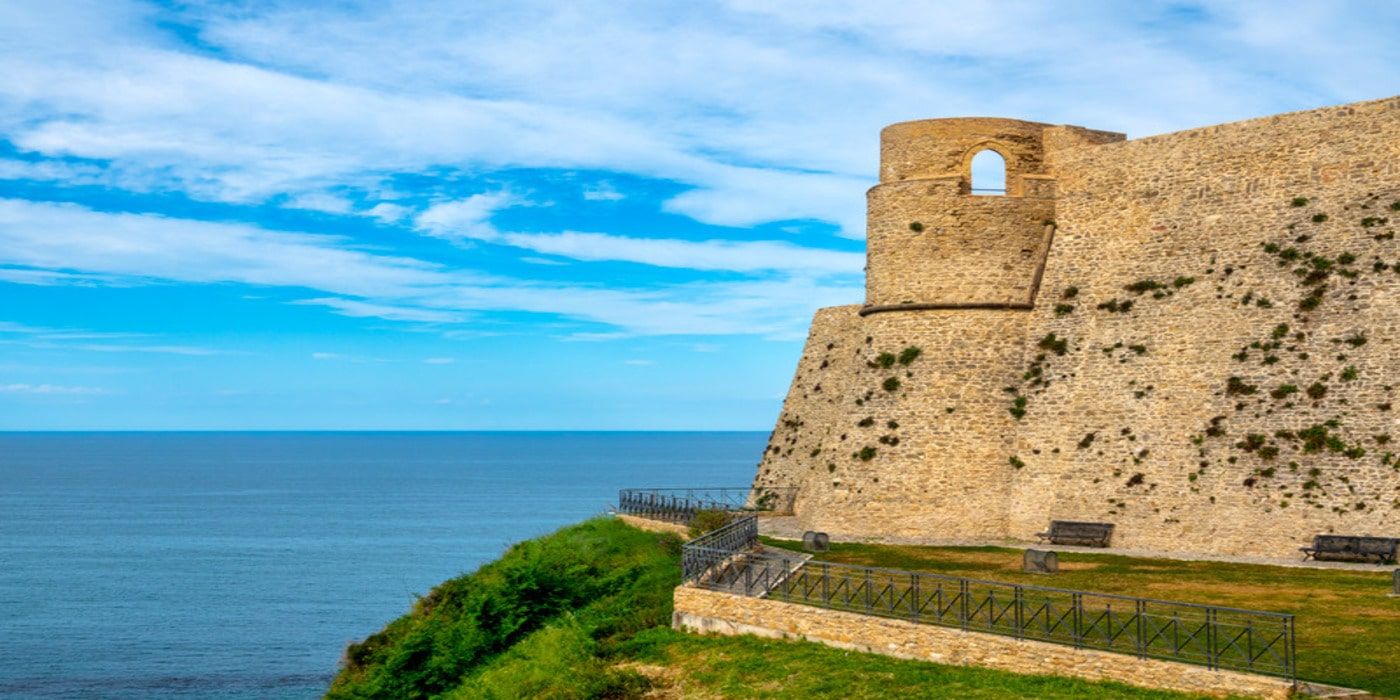
Denise Penna
Valuable historical evidence, picturesque scenery and the overwhelming scent of the sea: discover Ortona with our definitive guide